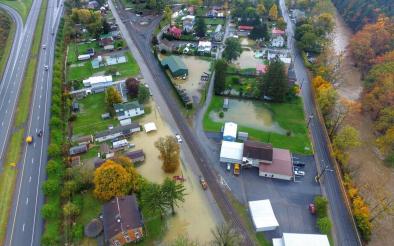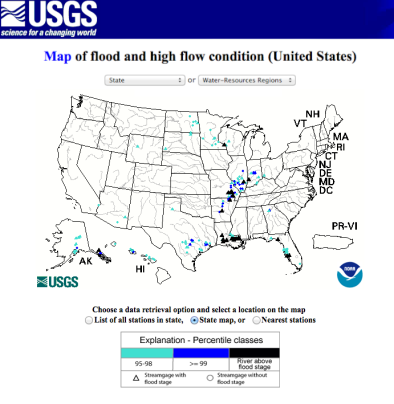Central Pennsylvania Floods October 2016
Overnight on October 20-21, and in a matter of hours, between 4 and 8 inches of rain swept through the Pennsylvania counties of Centre, Lycoming and Sullivan—killing one person, damaging local homes and businesses leading Centre County Commissioners to declare a disaster emergency. The number of extreme rainfall events globally has significantly increased in recent decades, and the fingerprint of global warming has been documented in this pattern. By increasing the frequency of extreme precipitation events, climate change increases the risk of flooding. In the northeastern region of the US extreme precipitation has increased 71 percent from 1958 to 2012.







Extreme rainfall in Centre and surrounding counties is a classic signal of climate change
One of the clearest changes in weather globally and across the United States is the increasing frequency of heavy rain.[1]
On the night of October 20-21, northcentral Pennsylvania experienced 4 to 8 inches of rain that caused flash flooding, killed one person, and damaged local homes and business.[2] The hardest hit areas included Milesburg in Centre County, Warrensville in Lycoming County and Hillsgrove in Sullivan County, officials said.[2] On the morning of October 21, Centre County Commissioners Mike Pipe, Mark Higgins and Steve Dershem declared a disaster emergency.[3] Although there were some indications of heavy rain expected late on October 20, the amounts recorded were more than anticipated, according to Matt Steinbugl with the National Weather Service (NWS) in State College.[2] NWS meteorologist Charles Ross said it may be the ‘worst case of flooding’ in the Centre County towns of Milesburg and Howard areas since Hurricane Ivan in 2004.[3]
Although there were some indications of heavy rain expected late on October 20, the amounts recorded were more than anticipated, according to Matt Steinbugl with the National Weather Service (NWS) in State College.[2] NWS meteorologist Charles Ross said it may be the ‘worst case of flooding’ in the Centre County towns of Milesburg and Howard areas since Hurricane Ivan in 2004.[3]
Climate change increases the risk of flooding by increasing the frequency of extreme precipitation. Warmer air holds more water, leading to stronger and more frequent heavy precipitation events, a global trend that has been firmly attributed to climate change.[4]
Extreme rainfall fits with increased heavy precipitation trend in the Northeast
Climate change contributes to increased flooding because warmer air holds more water, leading to stronger and more frequent precipitation events.
In the mid-latitudes, where most of the continental US is located, there is an upward trend in extreme precipitation in the vicinity of fronts associated with mid-latitude storms.[5]
In the northeastern region of the US that includes Pennsylvania extreme precipitation has increased 71 percent from 1958 to 2012.[1]
There has also been an observed bump in the number of days per year with more than 2 inches of rain since 1950 in cities across Pennsylvania,[6] as well as a steady increase in that measure nationwide.[7]
One review of high precipitation events at 207 weather stations found that nearly 90 percent of stations east of the Rocky Mountains saw an increase in the number of 1 inch precipitation days from 1949-2013.[7] A strong majority of these stations also saw an increase in the number of days with at least 2 inches of precipitation.[7]
Increases in extreme precipitation are linked to extreme flood events. Inland cities near large rivers in the US are now experience more flooding, and this shift is consistent with climate change.[1]
Globally, climate change is now responsible for a 18 percent share of moderate extreme rainfall events, i.e. one-in-a-thousand day events.[8] The more extreme the event, the more likely climate change was responsible, as climate change affects the frequency of the extreme events the most. In the instance of a one-in-a-thousand year event, the odds that climate change was responsible are dramatically higher.[8]
Related Content












